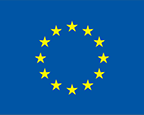Human exposure in Mediterranean
Exposure to POPs
Data on POP exposure of adults and infants (venous/cord blood serum and breast milk, new-borns, pre-schoolers and pre-adolescents) have been reviewed. The concentrations observed in the Mediterranean areas have been compared to those from other populations. In general, the concentrations were similar to previously reported concentrations for populations in developed countries. However, in comparison to other European studies, the Mediterranean populations exhibit higher median concentrations of HCB, β-HCH and DDTs. In contrast, the concentrations of PCBs in Mediterranean populations were lower compared to other European habitants, although the PBDE concentrations were higher than in other Europeans. Part of the difference is due to the high proportion of BDE-209 in the Mediterranean population. However, the Mediterranean values are clearly lower than those observed in the USA. According to the PBDE composition, deca-bromo and penta-bromo PBDE seem to be the first and second commercial mixtures responsible for the accumulation of these compounds in both adults and new-borns from the Mediterranean areas.
Garí and Grimault (2013) measured concentrations of PBDEs, including deca-BDE in people from Catalonia. This was one of the largest population ever studied (n = 731). One interesting outcome from this study was the observed inverse relation between age and serum concentrations of BDE-209 and most PBDEs. Young individuals showed the highest concentrations which is likely related to high exposure to these pollutants during their growth period. This effect overcomes the bioaccumulation trend due to the lipophilic character and chemical stability of these compounds which would result into higher concentrations at older ages. Pollutant distributions involving higher concentrations in older individuals are often observed in studies on human accumulation of polychlorinated compounds which is not the case of PBDEs in the present population. Furthermore, the 30 year threshold for the age dependence observed in this study suggests that these higher concentrations in young people may anticipate an increasing population exposure to these compounds, e.g. as the proportion of individuals born in the eighties and later will increase the overall PBDE concentrations in general population will also increase. Public health agencies should encourage research on these compounds to anticipate the effects of these increasing concentrations.
Exposure to mercury
People may be exposed to elemental Hg from e.g. dental amalgams and through inhalation of ambient air, during occupational activities in chlor-alkali plants, Hg mines, Hg-based small-scale gold and silver mining, refineries, thermometer factories, dental clinics with poor Hg handling practices, and the production of Hg-based chemicals. The general population is exposed to methylmercury mainly through the diet, especially through the consumption of freshwater- and marine fish and the consumption of other animals that consume fish (such as marine mammals).
The mercury levels in Mediterranean fish will not change much due to climate change. The main change regarding exposure via fish now and in the future will be due to the source of the fish, most fish currently consumed are from mariculture, and maricultured fish have different mercury levels and different nutritional values, for example, of fatty acids.





















